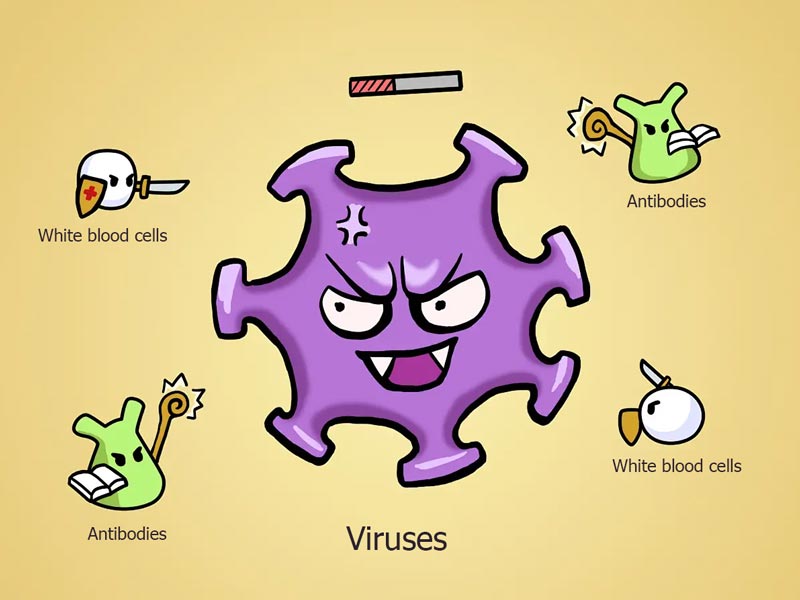When it comes to HPV (human papillomavirus), many people know it's closely linked to cervical cancer. However, few understand that the true culprits behind this uncontrolled cell transformation are a pair of oncogenes called E6 and E7 within the viral genome.
These two seemingly tiny protein molecules precisely attack the core regulatory mechanisms of human cells, gradually pushing healthy cells towards cancer.
Today, we will uncover the carcinogenic secrets of the E6 and E7 genes at a molecular level.

First, it's important to understand that not all HPVs are carcinogenic. Of the over 200 known HPV subtypes, only 14 are classified as "high-risk" (such as HPV types 16 and 18). Their common characteristic is that they carry genes that stably express the E6 and E7 proteins. When high-risk HPV enters the body through cutaneous or mucosal wounds, it preferentially infects actively dividing epithelial cells, such as those of the cervix.
At this point, the virus integrates its own DNA into the human cell's genome. This step is a critical turning point in the progression to cancer: once integration is complete, the E6 and E7 genes escape viral regulation and begin uncontrolled, massive protein production, launching a "precision attack" on the cell.
The E6 protein's primary target is the p53 protein, known as the "cancer suppressor" within human cells. Normally, p53 acts as a cellular "safety monitor." When a cell's DNA is damaged (for example, by radiation or chemicals), p53 rapidly activates, either initiating DNA repair mechanisms to repair the wound or, if the DNA damage is irreparable, triggering apoptosis (programmed cell death), halting further cell division and preventing the spread of abnormal cells. However, the E6 protein directly binds to the p53 protein, like a "shackle" on this "monitor." When these two proteins bind, they recruit an enzyme within the human cell (an E3 ubiquitin ligase) to tag the p53 protein for degradation. Tagged p53 is then recognized and broken down by the cell's "garbage disposal station," the proteasome. Without p53's oversight, damaged cells fail to initiate apoptosis and instead continue dividing with faulty DNA, laying the seeds for cancer.

If E6 disrupts cellular order by "eliminating overseers," E7 disrupts the regulatory switch, causing cells to enter a state of uncontrolled division. E7's primary target is the retinoblastoma protein (pRb) within the cell. In normal cells, pRb acts as the "master switch" controlling cell division: it binds to transcription factors (such as E2F) to form a complex, inhibiting E2F activity. E2F is the key signal that activates the expression of genes involved in cell division. When pRb is bound to E2F, E2F is unable to function, and the cell remains in a "quiescent phase," unable to divide freely. Only when cells need to proliferate normally does pRb become phosphorylated and dissociate from E2F, allowing E2F to activate division-related genes and initiate the cell division cycle.
But the E7 protein disrupts this balance. It preemptively binds to pRb, and its binding is stronger than E2F's—like a third party intervening, pulling pRb away from E2F. Without pRb's binding, E2F becomes completely uncontrolled, continuously activating cell division-related genes, forcing the cell into the division cycle even when it doesn't need to proliferate. Even more dangerously, E7 inhibits pRb phosphorylation, keeping pRb in an inactive state and preventing it from resuming its "on/off" function. This causes cells to fall into a vicious cycle of frantic division. The faster the division rate, the greater the probability of errors during DNA replication, accelerating the accumulation of abnormal cells and ultimately forming tumors.
Notably, the carcinogenic effects of E6 and E7 do not operate independently, but rather work in synergy. E7-induced excessive cell division leads to frequent DNA replication within the cell, naturally increasing the probability of DNA damage. Meanwhile, by degrading p53, E6 eliminates the "guardians" responsible for repairing damaged DNA and eliminating abnormal cells. This synergistic effect prevents cells from stopping erroneous division and repairing their own damage, ultimately forcing them to progress towards cancer. The process from HPV infection to cancer typically takes 10-20 years. Early detection during this period through methods like HPV testing and cervical screening allows for early intervention and prevents the development of cancer.
HPV vaccines are currently being developed to target E6 and E7, the core carcinogens. These vaccines work by inducing the production of antibodies against the HPV coat proteins, preventing viral entry into cells and disrupting the expression of the E6 and E7 genes. Understanding the molecular mechanisms of action of E6 and E7 not only helps us understand the scientific principles of HPV carcinogenesis but also reinforces the realization that HPV vaccination and regular cancer screening are the most effective ways to combat these two "cell destroyers."

%20--%3e%3c!DOCTYPE%20svg%20PUBLIC%20'-//W3C//DTD%20SVG%201.1//EN'%20'http://www.w3.org/Graphics/SVG/1.1/DTD/svg11.dtd'%3e%3csvg%20version='1.1'%20id='图层_1'%20xmlns='http://www.w3.org/2000/svg'%20xmlns:xlink='http://www.w3.org/1999/xlink'%20x='0px'%20y='0px'%20width='256px'%20height='256px'%20viewBox='0%200%20256%20256'%20enable-background='new%200%200%20256%20256'%20xml:space='preserve'%3e%3cpath%20fill='%23FFFFFF'%20d='M194.597,24.009h35.292l-77.094,88.082l90.697,119.881h-71.021l-55.607-72.668L53.229,232.01H17.92%20l82.469-94.227L13.349,24.009h72.813l50.286,66.45l58.148-66.469V24.009z%20M182.217,210.889h19.566L75.538,44.014H54.583%20L182.217,210.889z'/%3e%3c/svg%3e)